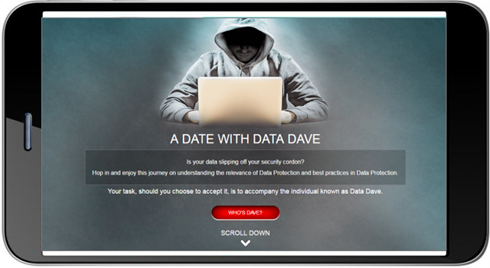
In today’s regulated business environment, effective compliance training is crucial for skill-based organizations in sectors like finance and healthcare. It mitigates risks, fosters a culture of integrity, and protects the organization’s reputation. Compliance training ensures adherence to regulations, reducing penalties and operational failures, while promoting ethical behavior and trust. Engaging the modern, tech-savvy workforce requires interactive, gamified learning, microlearning, and mobile-compatible, AI-driven solutions for flexibility and personalized experiences. In industries with strict regulatory demands, such as healthcare and finance, ongoing training is essential for maintaining professional standards and supporting career growth. By investing in dynamic compliance training, organizations can remain compliant, competitive, and successful.
This article shares practical tips and real-life examples to help you enhance learner engagement in your online compliance training endeavours.
What Is Compliance Training?
Compliance training in regulated environments is a strategic program that is aimed at ensuring employees understand and adhere to legal, ethical, and industry-specific regulations. It is vital for risk mitigation, fostering a culture of integrity, and protecting an organization’s reputation. In skill-based sectors like finance and healthcare, compliance training covers critical areas such as data protection, anti-money laundering, patient confidentiality, and safety standards. Modern compliance training employs interactive, gamified methods, microlearning, and mobile-compatible, AI-driven platforms to engage the tech-savvy workforce effectively. By equipping employees with the necessary knowledge and tools, compliance training helps organizations avoid penalties, maintain operational efficiency, and build trust with stakeholders, thereby supporting long-term success and competitive advantage.
Types of Compliance Training Programs
- Data Protection and Privacy Training: Focuses on laws like GDPR, teaching employees about handling personal data responsibly.
- Workplace Health and Safety Training: Covers OSHA standards, ensuring employees understand how to maintain a safe work environment.
- Anti-harassment and Discrimination Training: Educates employees on identifying and preventing workplace harassment and promoting a culture of diversity and inclusion.
- Ethical Conduct and Integrity Training: Addresses corporate ethics, teaching employees about ethical decision-making and behavior.
- Financial Compliance Training: Pertains to financial regulations, anti-money laundering laws, and ethical financial practices.
- Cybersecurity Training: Instructs employees on protecting company data against cyber threats and understanding cybersecurity policies.
- Environmental Compliance Training: Educates about environmental laws and the company’s responsibility towards sustainable practices.
- Quality Management Training: Focuses on maintaining and improving product or service quality as per industry standards.
- Export Compliance Training: Relevant for companies involved in international trade, covering export laws and regulations.
- Industry-specific Compliance Training: Tailored to specific industries, covering regulations and standards unique to each sector, such as healthcare, manufacturing, or finance.
Objectives of Compliance Training
- Educational Awareness: To inform employees about laws, regulations, and company policies that pertain to their job functions.
- Risk Mitigation: To reduce legal and ethical risks by ensuring employees understand compliance requirements.
- Promoting Ethical Work Culture: To instill a culture of integrity and ethical behavior within the organization.
- Preventing Workplace Incidents: To minimize incidents of non-compliance, such as breaches of conduct, harassment, or safety violations.
- Legal Accountability: To ensure the organization and its employees are compliant with all relevant legal standards, thereby avoiding penalties and legal repercussions.
- Empowering Decision-making: To provide employees with the knowledge necessary to make informed and compliant decisions in their day-to-day work.
Significance of Compliance Training in the Modern Workplace
In the modern, increasingly hybrid workplace, compliance training holds significant value, albeit often underappreciated by employees. While many workers may perceive compliance training as a mere box-ticking exercise that doesn’t contribute to their skill enhancement, its importance cannot be overstated.
- Adapting to Hybrid Work Models: Compliance training ensures remote and in-office employees are uniformly informed about policies, legal obligations, and ethical standards, maintaining a cohesive, compliant workforce.
- Addressing Misconceptions About Value: Compliance training is crucial for creating a safe, ethical, and legally compliant environment, equipping employees with essential regulatory knowledge.
- Ensuring Consistency and Inclusivity: Compliance training ensures all employees, regardless of work arrangement, have equal access to compliance knowledge, promoting an inclusive workplace culture.
- Mitigating Risks in Digital Environments: Compliance training in data security and privacy is essential for safeguarding information and maintaining trust in increasingly digital work environments.
Further, compliance training assists with the following:
- Skill Development: Equips employees with essential knowledge and skills to navigate complex regulations, enhancing their professional competency and career growth.
- Engagement and Retention: Utilizes modern, interactive training methods to keep employees engaged, improving knowledge retention and application.
- Consistent Messaging: Ensures that all employees, regardless of location, receive consistent training on legal, regulatory, and policy requirements, promoting uniformity across the organization.
- Proactive Risk Management: Prepares employees to identify and manage potential compliance issues before they escalate, reducing overall risk for the organization.
- Cultural Integration: Integrates compliance training into the broader learning and development strategy, reinforcing the company’s values and ethical standards across all levels of the organization.
Benefits of Compliance Training
Compliance training plays a pivotal role in shaping responsible business practices and informed employee behavior. Here are the top benefits of compliance training, showcasing its positive impact on both learners and organizations.
For the Learners
- Awareness and Understanding: Enhances the learner’s understanding of legal and ethical standards relevant to their job.
- Skill Enhancement: Develops critical thinking and decision-making skills, especially in ethical dilemmas.
- Career Development: Familiarity with compliance norms can be a valuable asset in career progression.
- Personal Accountability: Encourages a sense of responsibility and accountability for one’s actions within the professional setting.
For the Organization
- Risk Mitigation: Reduces the risk of legal penalties and non-compliance issues.
- Reputation Management: Helps in maintaining a positive public image by adhering to legal and ethical standards.
- Cultural Cohesion: Fosters a workplace culture that values integrity and compliance.
- Operational Efficiency: Informed employees make decisions that align with company policies, leading to smoother operations.
Challenges of Compliance
While compliance training is essential in the modern workplace, it comes with its own set of challenges that organizations must navigate.
- Engagement and Motivation: Keeping employees engaged and motivated in compliance training, especially when perceived as mandatory or uninteresting, remains a significant challenge in the current times.
- Relevance and Customization: Ensuring training content is relevant and tailored to specific roles within the organization to make it more applicable and meaningful for each employee.
- Consistency Across Diverse Workforce: Providing consistent training for a diverse, potentially global workforce, including remote and hybrid employees, while addressing cultural and language differences.
- Measuring Effectiveness: Accurately measuring the impact of compliance training on employee behavior and adherence to standards.
- Keeping Content Up to Date: Regularly updating training materials to reflect the latest legal and regulatory changes to stay compliant.
- Technological Barriers: Overcoming technological challenges to ensure that all employees, including remote and hybrid workers, have equal access to training resources.
- Time Constraints: Balancing comprehensive training needs with employees’ workload and time constraints, ensuring they can complete training without hindering productivity.
- Triggering Behavioral Change: Ensuring continuous learning that extends beyond formal training sessions, incorporating learning aids for constant reinforcement over time.
Practices for Creating Engaging Compliance Training
Creating an engaging compliance training program is essential to ensure employees are both informed and motivated. The following best practices can help enhance the effectiveness of compliance training, making it more interactive, relevant, and impactful for learners.
- Keep Abreast of Regulatory Changes: Stay updated on the latest regulatory developments relevant to your industry and geographic location. Regularly review and revise training content to maintain alignment with current laws and standards.
- Focus on Microlearning: Implement microlearning modules to deliver bite-sized, focused content on specific compliance topics. This approach accommodates shorter attention spans and allows for just-in-time learning, enhancing retention and application of knowledge.
- Leverage Interactive and Immersive Technologies: Explore the use of immersive technologies such as virtual reality (VR) and augmented reality (AR) to create realistic compliance scenarios and simulations. These interactive experiences provide engaging learning opportunities and enhance knowledge retention.
- Personalize Learning Experiences: Utilize data analytics and adaptive learning platforms to tailor training content and delivery methods based on individual learner preferences, knowledge levels, and job roles. Personalized learning experiences increase engagement and effectiveness.
- Promote Ethical Decision-Making: Integrate ethics training into compliance programs to emphasize the importance of ethical behavior and decision-making. Use case studies and real-life scenarios to encourage critical thinking and the application of ethical principles in the workplace.
- Foster Active Participation: Incorporate interactive elements such as quizzes, polls, and discussions to stimulate active participation and engagement among learners. Provide opportunities for learners to share insights, ask questions, and collaborate with peers.
- Offer Continuous Reinforcement: Implement spaced repetition techniques and regular reinforcement activities to promote long-term retention of compliance knowledge and skills. Provide ongoing support and resources for learners to access whenever they need assistance.
- Cultivate a Culture of Compliance: Foster a culture of compliance by involving senior leadership, managers, and employees in training initiatives. Communicate the importance of compliance, lead by example, and recognize and reward compliant behavior.
- Measure Training Effectiveness: Establish clear learning objectives and performance metrics to evaluate the effectiveness of compliance training programs. Use pre- and post-training assessments, surveys, and feedback mechanisms to assess knowledge acquisition and behavior change.
- Stay Agile and Responsive: Remain flexible and adaptive in your approach to compliance training, considering the evolving needs of your organization and workforce. Regularly solicit feedback from stakeholders and learners to identify areas for improvement and innovation.
Compliance Training Tips to Encourage and Motivate Employees
We need to have a combination of approaches to ensure that we can eventually see the required behavioral change in employees.
Here’s my list of five tips that can aid you in the process of this transformation:
Tip 1: Generate Awareness Prior to Training Rollout
Teaser videos can be leveraged to:
- Share a message about the significance of compliance.
- Create a compelling business case on why employees should focus on the upcoming training and respond correctly.
Tip 2: Change the Tone and Approach
As adult learners, we respond better to an approach that lays down why we should be mindful of certain aspects, as there are associated consequences (for us as well as the organization) if we do not comply.
To enhance engagement, change the learning approach. Begin your online compliance training by explaining:
- Why do the specific guidelines exist
- Why is it necessary to conform and what are the implications if we don’t
- What are the consequences for the employees and the organization
At the learning strategy level:
- Engage the learner first
- Share the facts in a format that they can relate to and understand their gravity (and more significantly, their consequences)
Once this is done, then move to:
- Dos and Don’ts: Avoid jargon and keep it simple and relatable.
- Reinforcement: Put the learners in situations (dilemmas) to assess if they have truly internalized the learning.
- Assessment: Push the validation of learning through questions that map to both levels of cognition (Understanding and Application). You can also opt for a series of questions that can be built from the response of the previous question. This threaded approach of assessments not only keeps the learners engaged but also pushes the cognition levels to the desired level.
Tip 3: Give the Control Back to the Learners
All adult learners like to be in control. It doesn’t hurt to provide the required flexibility to the learners through a combination of approaches, including offering courses on multiple devices (including smartphones and tablets) through mobile learning or mLearning and app-based learning.
This enables them to access the training on the device of their choice when they want to (rather than when they are required to).
Tip 4: Use Innovative Formats
Today, you have a wide range of learning strategies to pick from. These approaches create a much higher engagement quotient and will help you see better completion rates within the stipulated time.
Some of the approaches we use include:
- Partial gamification.
- Gamification.
- Microlearning.
- Personalization.
- Scenario-based learning.
- Story-based learning.
- Interactive video-based approach.
- Peer collaboration and social learning.
- Immersive learning.
- Binge learning.
Tip 5: Continue the Engagement After Completion of the Formal Training
We need to eventually see the learners undergo the desired behavioral change to sustain the required compliance.
This can be achieved by adding components of Performance Support Tools (just-in-time learning aids or job aids) to your online compliance training to reinforce the learning.
These learning aids support the primary training and can be made available to the learners within their workflow. They work very effectively in reinforcing the message of primary training. Additionally, they can be used to push the learners to take the required action.
What Can Be Done to Make Compliance Training Engaging for the Learners?
Before getting on to examples that showcase the techniques to step up the engagement quotient of online compliance trainings, it is important to watch out for what should not be done:
- Avoid making compliance training a bitter pill that everyone must swallow.
- Avoid preachy and prescriptive content as adult learners don’t like it.
- Avoid presenting information in a boring or predictable eLearning format.
Now let us look at four examples that feature the key aspects outlined so far:
- How can you achieve a high engagement quotient with the learners?
- How can you increase the stickiness of learning through immersive strategies?
Example 1: Insider Trading
A gamified simulation that keeps learners in the role of an “investigator”, where they need to explore, review, analyze, and then move forward through the course, while being presented with different decision-making options. The avatar driven approach used in the new format gives the learning a complete personalized touch.


Example 2: Social Engineering
This course uses the concept of a board game to craft the learning journey. Based on their level of expertise in the subject of Social Engineering, the learner must select a player piece at the beginning, which customizes the scenarios the learner would encounter in the course. The board game consists of blocks of challenges that the learner has to solve based on the throw of dice. Help is provided at in the form of a wizard who offers the learner crucial learning to solve the scenarios and challenges successfully.


Example 3: Code of Conduct
Learning nuggets were tied into a gamified learning journey for learners to complete and obtain the key to the Code of Conduct. Gating points (challenges) and incentives were introduced to keep the learners engaged to complete the journey.


Example 4: Data Security
Designed to reinforce the primary training on Data Security, this PST uses an ethical hacker persona who evaluates risks in three organizations. The rich visuals and interactive parallax-based design makes a compelling read and creates a highly sticky learning experience.

Parting Thoughts
In conclusion, this embracing innovative and experiential strategies and best practices can empower you to cultivate a culture of compliance and ethical behavior within your organization, ensuring not only regulatory adherence but also fostering a workplace environment that values integrity and accountability.




